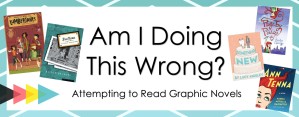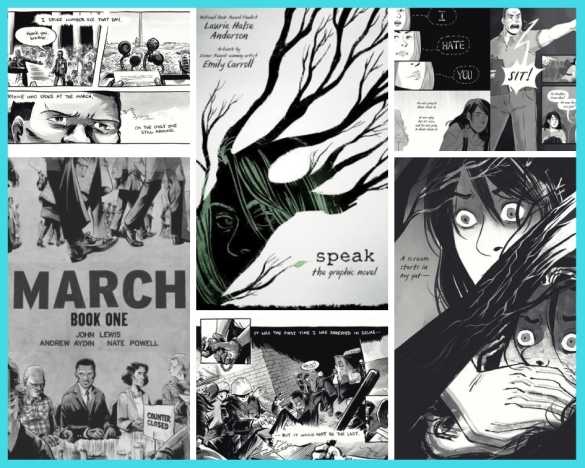At a Glance:

With March’s unexpected Safer-at-Home order, there was plenty of time to read. I finished 8 books: four graphic novels, two Young Adult novels, one work of nonfiction, and an adult fiction book. I’m linking to the Goodreads page for each book so you can add it to your “Want to Read” list.
- With the Fire on High by Elizabeth Acevedo | YA | Contemporary |
- Waking Up White by Debby Irving | Adult | Nonfiction |
- Mera: Tidebreaker by Danielle Paige | YA | Fantasy |
- b.b. free #1 by Gabby Rivera | YA | Graphic Novel |
- b.b. free #2 by Gabby Rivera | YA | Graphic Novel |
- Nancy Drew: The Palace of Wisdom by Kelly Thompson | YA | Graphic Novel |
- Between Shades of Gray by Ruta Sepetys | YA | Historical |
- Little Fires Everywhere by Celeste Ng | Adult | Contemporary |

+ Waking Up White – No misses
+ Between Shades of Gray
+ Little Fires Everywhere
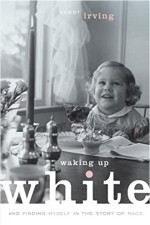 I finished Waking Up White for my social justice book club. Author Debby Irving explains how she “woke up” to the privilege her whiteness provides. She had a WASPy upbringing, and her father benefited from the GI Bill. After serving in the war, he received financial aid to go to college and buy a house. Irving was shocked to learn that these same benefits weren’t available for black soldiers who had served in the war. Irving’s parents had good jobs, savings, and were able to support their children’s education and housing purchases later on. Black families aren’t able to afford these types of inheritances. Irving goes beyond this example, though, and explains how a college class helped her to consider what the “White” race is and how the ideals she grew up with were different from other races and cultures. She gives lots of interesting stories about her racial education and how readers can discover their own misconceptions about race. A great read because it was so personable and humble. At times, a bit repetitive, but overall interesting content and reflections.
I finished Waking Up White for my social justice book club. Author Debby Irving explains how she “woke up” to the privilege her whiteness provides. She had a WASPy upbringing, and her father benefited from the GI Bill. After serving in the war, he received financial aid to go to college and buy a house. Irving was shocked to learn that these same benefits weren’t available for black soldiers who had served in the war. Irving’s parents had good jobs, savings, and were able to support their children’s education and housing purchases later on. Black families aren’t able to afford these types of inheritances. Irving goes beyond this example, though, and explains how a college class helped her to consider what the “White” race is and how the ideals she grew up with were different from other races and cultures. She gives lots of interesting stories about her racial education and how readers can discover their own misconceptions about race. A great read because it was so personable and humble. At times, a bit repetitive, but overall interesting content and reflections.
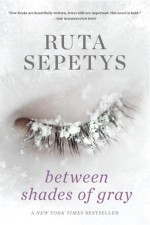 Between Shades of Gray is a young adult historical novel set at the beginning of World War II. This book was recommended to me by some of my tutoring students. They had to read the book for school, but they thought I would like it. I did like it – which doesn’t surprise me. I used to read a lot of historical fiction, but I haven’t read it for years now. I think I got distracted by dystopian and fantasy novels. Between Shades of Gray takes place in Lithuania in 1941. One night, fifteen-year-old Lina, her mother, and her younger brother are forced onto dirty train cars by Soviet soldiers and transported to work camps in Siberia. There’s no privacy, no food, no heat, no humanity. No matter how many books I read about World War II, I’m always amazed at how cruel humans can be to one another. This book was especially eye-opening because Germans weren’t the oppressors in this book, and Lina and her family weren’t even Jewish. Did you know that thousands of Lithuanian civilians were deported to work camps by the Soviets? After the Soviets, Lithuania was invaded by German forces – which they thought would bring them relief, but (we know) only led to the termination of thousands of Jews. When the Soviets became allies with the Americans, they slowly and quietly released Lithuanians from the work camps – some of which weren’t released until the early 1960s. However, these returning Lithuanians found their homes occupied, struggled to find work, and were not allowed to speak about their experiences. Lithuania isn’t a country I’ve learned much about, so this story was fascinating. It was tough to read at times, but somehow, there was always a glimmer of hope.
Between Shades of Gray is a young adult historical novel set at the beginning of World War II. This book was recommended to me by some of my tutoring students. They had to read the book for school, but they thought I would like it. I did like it – which doesn’t surprise me. I used to read a lot of historical fiction, but I haven’t read it for years now. I think I got distracted by dystopian and fantasy novels. Between Shades of Gray takes place in Lithuania in 1941. One night, fifteen-year-old Lina, her mother, and her younger brother are forced onto dirty train cars by Soviet soldiers and transported to work camps in Siberia. There’s no privacy, no food, no heat, no humanity. No matter how many books I read about World War II, I’m always amazed at how cruel humans can be to one another. This book was especially eye-opening because Germans weren’t the oppressors in this book, and Lina and her family weren’t even Jewish. Did you know that thousands of Lithuanian civilians were deported to work camps by the Soviets? After the Soviets, Lithuania was invaded by German forces – which they thought would bring them relief, but (we know) only led to the termination of thousands of Jews. When the Soviets became allies with the Americans, they slowly and quietly released Lithuanians from the work camps – some of which weren’t released until the early 1960s. However, these returning Lithuanians found their homes occupied, struggled to find work, and were not allowed to speak about their experiences. Lithuania isn’t a country I’ve learned much about, so this story was fascinating. It was tough to read at times, but somehow, there was always a glimmer of hope.
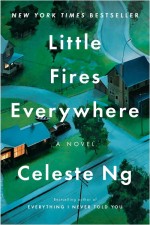 Little Fires Everywhere has been trending lately thanks to Reese Witherspoon and Kerry Washington’s hulu miniseries. The book follows the picture-perfect Richardson family as they meet the single-mom and daughter occupying their rental property. Mia Warren is an artist who arrives with her daughter Pearl in an old VW van. The Richardson kids, though they have the best of everything, are each lacking in some way, but Mia seems to make them whole. When Mrs. Richardson goes digging into Mia’s past, she discovers a big secret. Meanwhile, the whole town is caught up in a custody battle. Friends of the Richardsons, the McCullough’s have always wanted their own child. When the opportunity to adopt comes along, they welcome the baby, whom they want to name Mirabelle, with open arms. But just before the adoption papers are finalized, the birth mother decides that she wants her baby – who she calls May Ling – back. A race and privilege battle ensues, prompting the question, who really deserves to be a mother? Is it best for the child to grow up with two parents who have money, or should she stay with her biological mother who barely makes ends meet? The book really turns into a reflection on mother-daughter relationships. An engaging read, Little Fires Everywhere was probably my favorite book of the month if I had to pick just one.
Little Fires Everywhere has been trending lately thanks to Reese Witherspoon and Kerry Washington’s hulu miniseries. The book follows the picture-perfect Richardson family as they meet the single-mom and daughter occupying their rental property. Mia Warren is an artist who arrives with her daughter Pearl in an old VW van. The Richardson kids, though they have the best of everything, are each lacking in some way, but Mia seems to make them whole. When Mrs. Richardson goes digging into Mia’s past, she discovers a big secret. Meanwhile, the whole town is caught up in a custody battle. Friends of the Richardsons, the McCullough’s have always wanted their own child. When the opportunity to adopt comes along, they welcome the baby, whom they want to name Mirabelle, with open arms. But just before the adoption papers are finalized, the birth mother decides that she wants her baby – who she calls May Ling – back. A race and privilege battle ensues, prompting the question, who really deserves to be a mother? Is it best for the child to grow up with two parents who have money, or should she stay with her biological mother who barely makes ends meet? The book really turns into a reflection on mother-daughter relationships. An engaging read, Little Fires Everywhere was probably my favorite book of the month if I had to pick just one.

- We had a bunch of books, graphic novels, and movies checked out from the library when COVID-19 rolled in. Our local library made the decision to close very early on, so we haven’t been able to refresh and get any new books. I would really like some fresh picture books to read to my daughter at night. I’d also love a new stack of graphic novels. Our library said that our materials are all due on May 1st – no matter when your books were originally due. I think one of the places I’m most looking forward to going once the pandemic is over is the library.
Pages read in March: 1,750

Stay safe and healthy, everyone.


